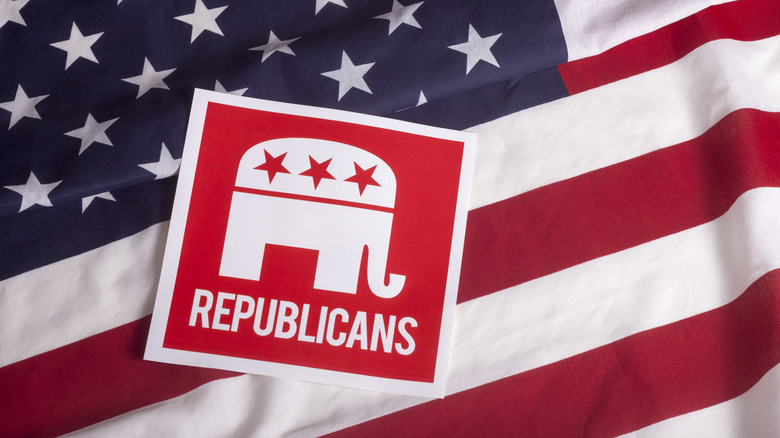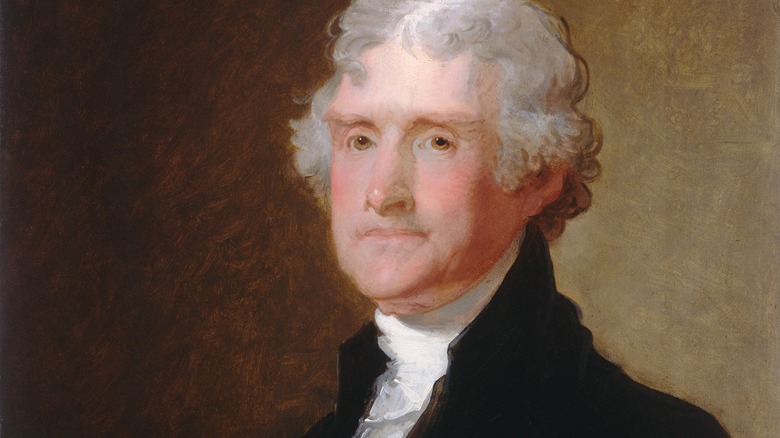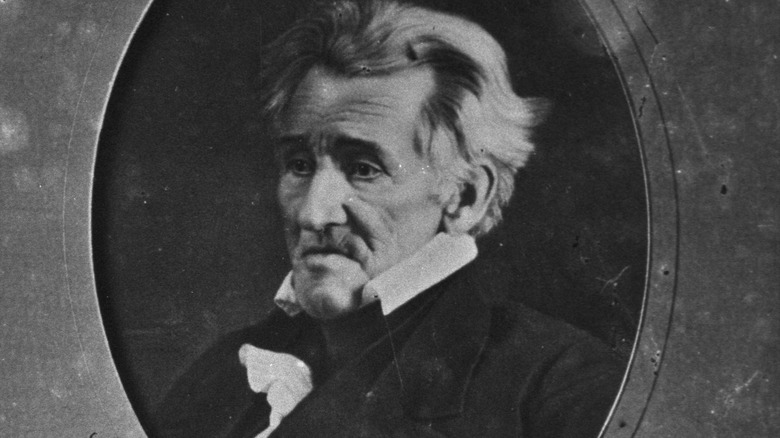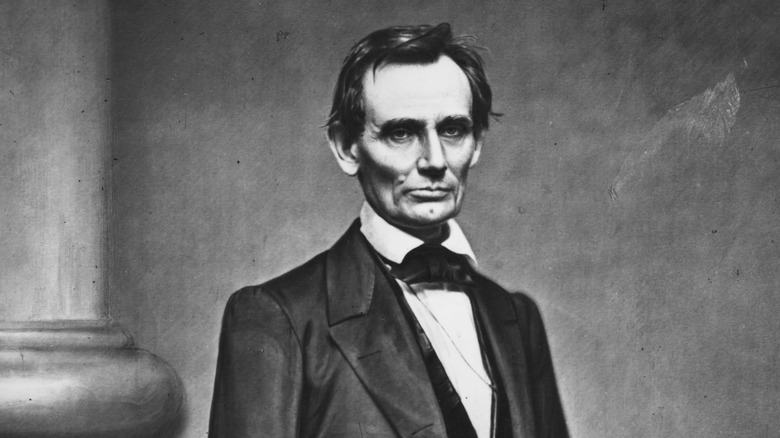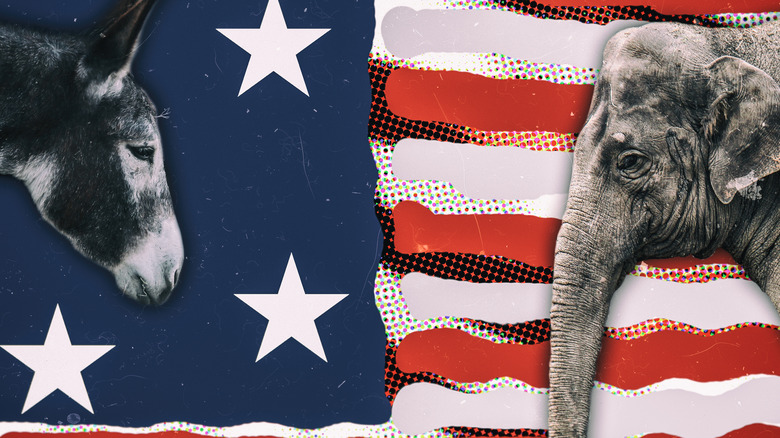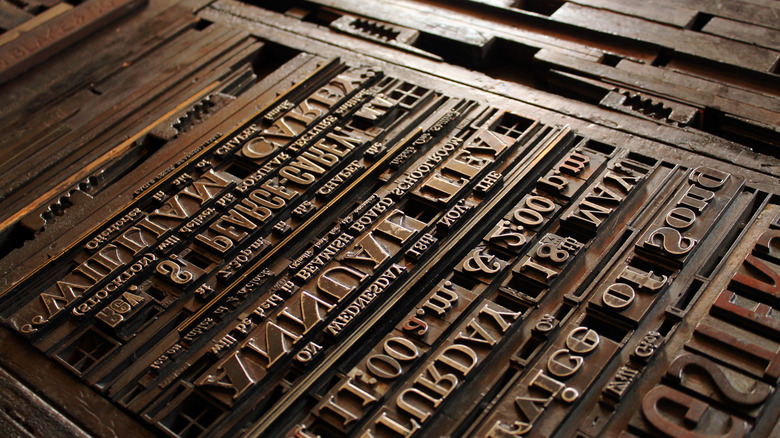How The Republican Party Got Its GOP Nickname
The Republican Party — one of the two dominant parties in American politics — is colloquially referred to by the three-letter nickname "GOP." Most are probably aware that it stands for "Grand Old Party," but the origins of that nickname aren't as well-known.
While it may seem that such a shorthand would be a relatively recent adoptee according to History, newspapers and politicians themselves were using GOP as far back as the 1870s. Interestingly enough, the "G" stood for "Grand," as it typically does today, but in the years when the Civil War was still a recent, painful memory, the "G" sometimes stood for "Gallant," a nod to the party's role in keeping the Union together during and after the war.
What's strange about the nickname is that it was first used when the Republicans were still the new kids on the block of U.S. politics, whereas their rivals, the Democratic Party, had been around for quite some time. In fact, it was the Democrats who were first to call themselves "the Grand Old Party."
The Democratic-Republicans formed to oppose the Federalists
While it may seem like Republicans and Democrats have been around since the start of United States history, they haven't. The Democratic Party emerged in the 1820s, but to make matters more confusing, they were originally known as the Democratic-Republican Party.
The Democratic-Republican Party was the first opposition party in the history of the United States, according to Britannica. This group opposed Secretary of the Treasury Alexander Hamilton's fiscal program. Hamilton was one of the founders of the Federalist Party, which believed in a strong central government and loose interpretation of the Constitution. Thomas Jefferson was one prominent figure who disagreed with these views, and he led the opposing party. At first, they used the name Republican because of its strong anti-monarchy sentiment, plus they believed the Federalists had aristocratic attitudes, pointing to their favoring of a powerful central government.
The Democratic-Republican name was given to the party by the rival Federalists, who saw it as a slam that tied their opponents to the French Revolution. However, the party adopted it and became the Democratic-Republican Party in 1798.
The Democratic-Republicans split
The Democratic-Republican Party produced three presidents: Thomas Jefferson, James Madison, and James Monroe. However, following the 1824 election, there was a schism within the party. One group broke off and became the National Republicans, which would eventually become the core of the Whig Party in the 1830s. The other half soldiered on until Andrew Jackson's presidency, at which point they dropped Republican from the name and became known as either Democrats or Jacksonian Democrats. By 1844, the party was officially known as the Democratic Party (via Britannica).
The Democrats went on to great success, winning every presidential election between 1828 and 1856 except 1840 and 1848, which were won by William Henry Harrison and Zachary Taylor, respectively. Things were looking good for the Democrats until the 1950s, when the issue of slavery in western states came up. This split the party once again due to southern Democrats favoring expanding slavery's reach while northern Democrats opposed the idea. This gave rise to their rivals for the next 160 years, the Republican Party, who managed to claim the White House in 1860 with their candidate Abraham Lincoln.
The start of the Republican Party
The Republican Party got its start in 1854, just six years before Lincoln's win in the 1860 presidential election. According to History, the Republican Party was formed by a collection of Whigs, former Democrats, and members of other parties to oppose the westward expansion of slavery because they believed the interests of slave states would overpower the rest of the country. The party's first meeting was held in Ripon, Wisconsin, with a second, large meeting held two months later in Jackson, Michigan. The Republicans quickly gained support in the North, and their first presidential candidate, John C. Fremont, even managed to win 11 of the 16 northern states (via History).
Thanks to the division within the Democratic Party, the Republicans were able to get Abraham Lincoln into the White House. However, that victory caused southern states to read the writing on the wall, and they seceded from the Union before Lincoln was even inaugurated, a precursor to the impending Civil War.
The Grand Old Party nickname switches parties
The Republican Party is the party synonymous with the GOP moniker in modern U.S. politics, but ironically, it was the Democrats who were the first to use it. According to History, the first politician to use the term "grand old party" on record was Beriah Magoffin, the Democratic Governor of Kentucky. "The grand old party has never changed its name, its purposes, or its principles, nor has it ever broken its pledges," he said in his inaugural address in 1859.
In 1860, the phrase popped up again, only this time it was accompanied by a warning about the Democratic Party's imminent defeat in the 1860 election. A Democratic newspaper in Connecticut wrote (via History) that "this grand old party is divided and in danger of defeat," alluding to the split between northern and southern Democrats.
However, by the 1870s, the term became a nickname for the Republicans. According to Safire's Political Dictionary, both Grand Old Party and Gallant Old Party were both in use and referred to the Republican Party. On October 15, 1884, The New York Tribune used the abbreviation, saying, "The G.O.P. Doomed, shouted Boston Post," though the Boston Post's usage has never been found.
The origin of the initials
According to History, the first usage of the initials GOP happened in 1884, but it wasn't in The New York Tribune. It's believed that a typesetter named T.B. Dowden, who worked for the Cincinnati Gazette, was responsible for the first use of GOP, and it was done out of necessity.
The story goes that Dowden was working on setting a story about 1884 Republican presidential nominee James Blaine. The copy he was given ended with the words "grand old party," but despite numerous attempts at getting everything to fit, he was still only left with two words. His foremen told him to do anything that would get the job done as fast as possible, so Dowden changed the copy from "achievements of the grand old party" to "achievements of the GOP."
The three letters have been used to refer to the Republican Party ever since, but according to Safire's Political Dictionary, there have been variations in their meaning. One ill-fated rebranding attempt tried to get GO-Party to catch on, while in 1972, Richard Nixon used GOP to stand for "Generation of Peace." Opponents have come up with their own GOP variations, including Democratic President Harry Truman, who said GOP stood for "Grand Old Platitudes."
